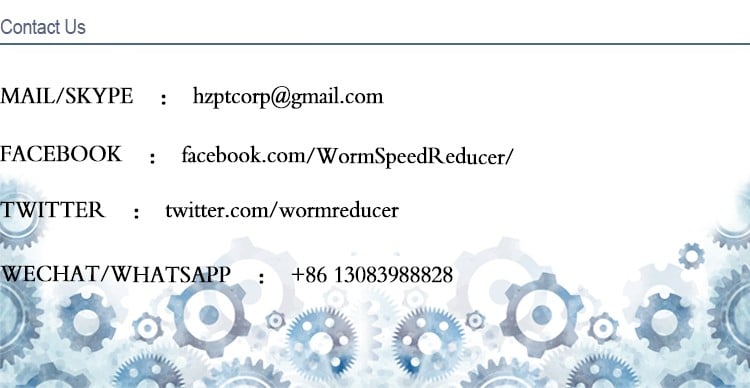Product Description
DS Series Dry Screw Vacuum Pump
Features
1.Exhaust Path Is Short, Reduce The Deposition Of Reactants.
Comparing with other types of dry vacuum pump,DENAIR screw vacuum pump has the shortest gas path in the vacuum pump and that could reduce the contamination of process gas. Screw rotors can play as a powder transmission mechanism,we runs well even there has lots of contamination inside the pump.
2.The Optimal Linear Sealing, The Pump Performance.
Patented rotor profile can provide rotor excellent sealing effects thus a larger clearance is allowable in between.Pump rotor wesring and rotor jam by the process contamination can be reduced by larger allowable clearcance.
3.Simple Structure, Low Fault Rate And Easy Maintenance
Screw type vacuum is composed by a pair of screw rotor and isolation plates are required in different between rotors and isolation plates can also be avoided.Overhaul CHINAMFG dry pump is much easier than other type of dry pump,so the erpair time is shorter and the cost is saver.
4.Microcomputer Operation, Remote Monitoring, Considerate Protection
Microprocessor controller provides lots of pump parameters for running status monitoring.Pump can be easily operated and monitored by the operation panel.Remote control software can help the customer monitor the pump running status remotely.
DS Vacuum Pump Speed Curve
Advantages
1.Special cooling liquid cooling, to avoid the cooling water may cause corrosion to the hull.
2.Mobile operation interface, convenient operation; Display and the actual work of vacuum pump and can be selected to both languages, according to the real close to the customer.
3.Catch the power connector, safe and convenient.
4.The nitrogen gas heater, make the vacuum pump is more suitable for CVD, PECVD and other semiconductor technique process.
5.The control signals and communication signal interface, remote monitoring was carried out on the vacuum.
Application
1.The health care industry.
2.Lighting industry.
3.A variety of analytical instruments.
4.Electronics, semiconductor industry.
5.The power industry.
6.Refrigeration industry.
Technical Prameters
| Type | Unit | DS180 | DS250 | DS360 | DS540 | DS720 | |||||||||||||||||||||||||||||||||||||||||||||||||||||||||||||||||||||||||||||||||||||||||||||||||||||||||||||||||||||||||||
| 50Hz | 60Hz | 50Hz | 60Hz | 50Hz | 60Hz | 50Hz | 60Hz | 50Hz | 60Hz | ||||||||||||||||||||||||||||||||||||||||||||||||||||||||||||||||||||||||||||||||||||||||||||||||||||||||||||||||||||||||
| Pumping speed | m3/hr | 180 | 216 | 250 | 3, China And our factory is located in No.386,YangzhuangBang Street,Pingxing Rd.,Xindai Town,HangZhou,ZHangZhoug Province, China Q3: Warranty terms of your machine? Q4: Will you provide some spare parts of the machines? Q5: How long will you take to arrange production? Q6: Can you accept OEM orders?
What Is the Impact of Altitude on Vacuum Pump Performance?The performance of vacuum pumps can be influenced by the altitude at which they are operated. Here’s a detailed explanation: Altitude refers to the elevation or height above sea level. As the altitude increases, the atmospheric pressure decreases. This decrease in atmospheric pressure can have several effects on the performance of vacuum pumps: 1. Reduced Suction Capacity: Vacuum pumps rely on the pressure differential between the suction side and the discharge side to create a vacuum. At higher altitudes, where the atmospheric pressure is lower, the pressure differential available for the pump to work against is reduced. This can result in a decrease in the suction capacity of the vacuum pump, meaning it may not be able to achieve the same level of vacuum as it would at lower altitudes. 2. Lower Ultimate Vacuum Level: The ultimate vacuum level, which represents the lowest pressure that a vacuum pump can achieve, is also affected by altitude. As the atmospheric pressure decreases with increasing altitude, the ultimate vacuum level that can be attained by a vacuum pump is limited. The pump may struggle to reach the same level of vacuum as it would at sea level or lower altitudes. 3. Pumping Speed: Pumping speed is a measure of how quickly a vacuum pump can remove gases from a system. At higher altitudes, the reduced atmospheric pressure can lead to a decrease in pumping speed. This means that the vacuum pump may take longer to evacuate a chamber or system to the desired vacuum level. 4. Increased Power Consumption: To compensate for the decreased pressure differential and achieve the desired vacuum level, a vacuum pump operating at higher altitudes may require higher power consumption. The pump needs to work harder to overcome the lower atmospheric pressure and maintain the necessary suction capacity. This increased power consumption can impact energy efficiency and operating costs. 5. Efficiency and Performance Variations: Different types of vacuum pumps may exhibit varying degrees of sensitivity to altitude. Oil-sealed rotary vane pumps, for example, may experience more significant performance variations compared to dry pumps or other pump technologies. The design and operating principles of the vacuum pump can influence its ability to maintain performance at higher altitudes. It’s important to note that vacuum pump manufacturers typically provide specifications and performance curves for their pumps based on standardized conditions, often at or near sea level. When operating a vacuum pump at higher altitudes, it is advisable to consult the manufacturer’s guidelines and consider any altitude-related limitations or adjustments that may be necessary. In summary, the altitude at which a vacuum pump operates can have an impact on its performance. The reduced atmospheric pressure at higher altitudes can result in decreased suction capacity, lower ultimate vacuum levels, reduced pumping speed, and potentially increased power consumption. Understanding these effects is crucial for selecting and operating vacuum pumps effectively in different altitude environments.
Can Vacuum Pumps Be Used in the Production of Solar Panels?Yes, vacuum pumps are extensively used in the production of solar panels. Here’s a detailed explanation: Solar panels, also known as photovoltaic (PV) panels, are devices that convert sunlight into electricity. The manufacturing process of solar panels involves several critical steps, many of which require the use of vacuum pumps. Vacuum technology plays a crucial role in ensuring the efficiency, reliability, and quality of solar panel production. Here are some key areas where vacuum pumps are utilized: 1. Silicon Ingot Production: The first step in solar panel manufacturing is the production of silicon ingots. These ingots are cylindrical blocks of pure crystalline silicon that serve as the raw material for solar cells. Vacuum pumps are used in the Czochralski process, which involves melting polycrystalline silicon in a quartz crucible and then slowly pulling a single crystal ingot from the molten silicon. Vacuum pumps create a controlled environment by removing impurities and preventing contamination during the crystal growth process. 2. Wafering: After the silicon ingots are produced, they undergo wafering, where the ingots are sliced into thin wafers. Vacuum pumps are used in wire saws to create a low-pressure environment that helps to cool and lubricate the cutting wire. The vacuum also assists in removing the silicon debris generated during the slicing process, ensuring clean and precise cuts. 3. Solar Cell Production: Vacuum pumps play a significant role in various stages of solar cell production. Solar cells are the individual units within a solar panel that convert sunlight into electricity. Vacuum pumps are used in the following processes: – Diffusion: In the diffusion process, dopants such as phosphorus or boron are introduced into the silicon wafer to create the desired electrical properties. Vacuum pumps are utilized in the diffusion furnace to create a controlled atmosphere for the diffusion process and remove any impurities or gases that may affect the quality of the solar cell. – Deposition: Thin films of materials such as anti-reflective coatings, passivation layers, and electrode materials are deposited onto the silicon wafer. Vacuum pumps are used in various deposition techniques like physical vapor deposition (PVD) or chemical vapor deposition (CVD) to create the necessary vacuum conditions for precise and uniform film deposition. – Etching: Etching processes are employed to create the desired surface textures on the solar cell, which enhance light trapping and improve efficiency. Vacuum pumps are used in plasma etching or wet etching techniques to remove unwanted material or create specific surface structures on the solar cell. 4. Encapsulation: After the solar cells are produced, they are encapsulated to protect them from environmental factors such as moisture and mechanical stress. Vacuum pumps are used in the encapsulation process to create a vacuum environment, ensuring the removal of air and moisture from the encapsulation materials. This helps to achieve proper bonding and prevents the formation of bubbles or voids, which could degrade the performance and longevity of the solar panel. 5. Testing and Quality Control: Vacuum pumps are also utilized in testing and quality control processes during solar panel production. For example, vacuum systems can be used for leak testing to ensure the integrity of the encapsulation and to detect any potential defects or leaks in the panel assembly. Vacuum-based measurement techniques may also be employed for assessing the electrical characteristics and efficiency of the solar cells or panels. In summary, vacuum pumps are integral to the production of solar panels. They are used in various stages of the manufacturing process, including silicon ingot production, wafering, solar cell production (diffusion, deposition, and etching), encapsulation, and testing. Vacuum technology enables precise control, contamination prevention, and efficient processing, contributing to the production of high-quality and reliable solar panels. Can Vacuum Pumps Be Used in Food Processing?Yes, vacuum pumps are widely used in food processing for various applications. Here’s a detailed explanation: Vacuum pumps play a crucial role in the food processing industry by enabling the creation and maintenance of vacuum or low-pressure environments. They offer several benefits in terms of food preservation, packaging, and processing. Here are some common applications of vacuum pumps in food processing: 1. Vacuum Packaging: Vacuum pumps are extensively used in vacuum packaging processes. Vacuum packaging involves removing air from the packaging container to create a vacuum-sealed environment. This process helps extend the shelf life of food products by inhibiting the growth of spoilage-causing microorganisms and reducing oxidation. Vacuum pumps are used to evacuate the air from the packaging, ensuring a tight seal and maintaining the quality and freshness of the food. 2. Freeze Drying: Vacuum pumps are essential in freeze drying or lyophilization processes used in food processing. Freeze drying involves removing moisture from food products while they are frozen, preserving their texture, flavor, and nutritional content. Vacuum pumps create a low-pressure environment that allows frozen water to directly sublimate from solid to vapor, resulting in the removal of moisture from the food without causing damage or loss of quality. 3. Vacuum Cooling: Vacuum pumps are utilized in vacuum cooling processes for rapid and efficient cooling of food products. Vacuum cooling involves placing the food in a vacuum chamber and reducing the pressure. This lowers the boiling point of water, facilitating the rapid evaporation of moisture and heat from the food, thereby cooling it quickly. Vacuum cooling helps maintain the freshness, texture, and quality of delicate food items such as fruits, vegetables, and bakery products. 4. Vacuum Concentration: Vacuum pumps are employed in vacuum concentration processes in the food industry. Vacuum concentration involves removing excess moisture from liquid food products to increase their solids content. By creating a vacuum, the boiling point of the liquid is reduced, allowing for gentle evaporation of water while preserving the desired flavors, nutrients, and viscosity of the product. Vacuum concentration is commonly used in the production of juices, sauces, and concentrates. 5. Vacuum Mixing and Deaeration: Vacuum pumps are used in mixing and deaeration processes in food processing. In the production of certain food products such as chocolates, confectioneries, and sauces, vacuum mixing is employed to remove air bubbles, achieve homogeneity, and improve product texture. Vacuum pumps aid in the removal of entrapped air and gases, resulting in smooth and uniform food products. 6. Vacuum Filtration: Vacuum pumps are utilized in food processing for vacuum filtration applications. Vacuum filtration involves separating solids from liquids or gases using a filter medium. Vacuum pumps create suction that draws the liquid or gas through the filter, leaving behind the solid particles. Vacuum filtration is commonly used in processes such as clarifying liquids, removing impurities, and separating solids from liquids in the production of beverages, oils, and dairy products. 7. Marinating and Brining: Vacuum pumps are employed in marinating and brining processes in the food industry. By applying a vacuum to the marinating or brining container, the pressure is reduced, allowing the marinade or brine to penetrate the food more efficiently. Vacuum marinating and brining help enhance flavor absorption, reduce marinating time, and improve the overall taste and texture of the food. 8. Controlled Atmosphere Packaging: Vacuum pumps are used in controlled atmosphere packaging (CAP) systems in the food industry. CAP involves modifying the gas composition within food packaging to extend the shelf life and maintain the quality of perishable products. Vacuum pumps aid in the removal of oxygen or other unwanted gases from the package, allowing the introduction of a desired gas mixture that preserves the food’s freshness and inhibits microbial growth. These are just a few examples of how vacuum pumps are used in food processing. The ability to create and control vacuum or low-pressure environments is a valuable asset in preserving food quality, enhancing shelf life, and facilitating various processing techniques in the food industry.
China supplier Environmental Protection Centrifugal High Speed Vacuum Pump and Compressor for Farming Industry Pesticide Fertilizer Production Farming Machinery with Great qualityProduct Description
Product Description
2BE series water ring vacuum pump and compressor, based on many years of scientific research results and production experience, combined with the international advanced technology of similar products, developed high efficiency and energy saving products, usually used for pumping no CHINAMFG particles, insoluble in water, no corrosion gas, in order to form a vacuum and pressure in a closed container. By changing the structure material, it can also be used to suck corrosive gas or to use corrosive liquid as working fluid. Widely used in papermaking, chemical, petrochemical, light industry, pharmaceutical, food, metallurgy, building materials, electrical appliances, coal washing, mineral processing, chemical fertilizer and other industries. This series of pumps uses the CHINAMFG single action structure, has the advantages of simple structure, convenient maintenance, reliable operation, high efficiency and energy saving, and can adapt to large displacement, load impact fluctuation and other harsh conditions. Pump structure The performance curve of this series of pumps is measured under the following working conditions: the suction medium is 20°C saturated air, the working liquid temperature is 15°C, the exhaust pressure is 1013mbar, and the deviation of soil is 10%.
Structure declaration 2BEA-10-25 Structure diagram 1.Flat key 2. Shaft 3. Oil deflector 4. Bearing cap 5. Bearings 6. Bearing bracket 7.Brasque cover
2BEA-30-70 Structure diagram 1.Flat key 2. Shaft 3. Oil deflector 4. Front bearing retainer 5. Front bearing body Product Parameters
Detailed Photos Operation site
Company presentation
Product gallery RFQ Q1. What is your terms of packing? Q2. What is your termsof payment? Q3. What is your terms of delivery? Q4. How about your delivery time? Q5. Can you produce according to the samples? Q6. What is your sample policy? Q7. Do you test all your goods before delivery? Q8: How do you make our business long-term and good relationship? /* March 10, 2571 17:59:20 */!function(){function s(e,r){var a,o={};try{e&&e.split(“,”).forEach(function(e,t){e&&(a=e.match(/(.*?):(.*)$/))&&1
What Is the Vacuum Level and How Is It Measured in Vacuum Pumps?The vacuum level refers to the degree of pressure below atmospheric pressure in a vacuum system. It indicates the level of “emptiness” or the absence of gas molecules in the system. Here’s a detailed explanation of vacuum level measurement in vacuum pumps: Vacuum level is typically measured using pressure units that represent the difference between the pressure in the vacuum system and atmospheric pressure. The most common unit of measurement for vacuum level is the Pascal (Pa), which is the SI unit. Other commonly used units include Torr, millibar (mbar), and inches of mercury (inHg). Vacuum pumps are equipped with pressure sensors or gauges that measure the pressure within the vacuum system. These gauges are specifically designed to measure the low pressures encountered in vacuum applications. There are several types of pressure gauges used for measuring vacuum levels: 1. Pirani Gauge: Pirani gauges operate based on the thermal conductivity of gases. They consist of a heated element exposed to the vacuum environment. As gas molecules collide with the heated element, they transfer heat away, causing a change in temperature. By measuring the change in temperature, the pressure can be inferred, allowing the determination of the vacuum level. 2. Thermocouple Gauge: Thermocouple gauges utilize the thermal conductivity of gases similar to Pirani gauges. They consist of two dissimilar metal wires joined together, forming a thermocouple. As gas molecules collide with the thermocouple, they cause a temperature difference between the wires, generating a voltage. The voltage is proportional to the pressure and can be calibrated to provide a reading of the vacuum level. 3. Capacitance Manometer: Capacitance manometers measure pressure by detecting the change in capacitance between two electrodes caused by the deflection of a flexible diaphragm. As the pressure in the vacuum system changes, the diaphragm moves, altering the capacitance and providing a measurement of the vacuum level. 4. Ionization Gauge: Ionization gauges operate by ionizing gas molecules in the vacuum system and measuring the resulting electrical current. The ion current is proportional to the pressure, allowing the determination of the vacuum level. There are different types of ionization gauges, such as hot cathode, cold cathode, and Bayard-Alpert gauges. 5. Baratron Gauge: Baratron gauges utilize the principle of capacitance manometry but with a different design. They consist of a pressure-sensing diaphragm separated by a small gap from a reference electrode. The pressure difference between the vacuum system and the reference electrode causes the diaphragm to deflect, changing the capacitance and providing a measurement of the vacuum level. It’s important to note that different types of vacuum pumps may have different pressure ranges and may require specific pressure gauges suitable for their operating conditions. Additionally, vacuum pumps are often equipped with multiple gauges to provide information about the pressure at different stages of the pumping process or in different parts of the system. In summary, vacuum level refers to the pressure below atmospheric pressure in a vacuum system. It is measured using pressure gauges specifically designed for low-pressure environments. Common types of pressure gauges used in vacuum pumps include Pirani gauges, thermocouple gauges, capacitance manometers, ionization gauges, and Baratron gauges. \ What Is the Role of Vacuum Pumps in Pharmaceutical Manufacturing?Vacuum pumps play a crucial role in various aspects of pharmaceutical manufacturing. Here’s a detailed explanation: Vacuum pumps are extensively used in pharmaceutical manufacturing processes to support a range of critical operations. Some of the key roles of vacuum pumps in pharmaceutical manufacturing include: 1. Drying and Evaporation: Vacuum pumps are employed in drying and evaporation processes within the pharmaceutical industry. They facilitate the removal of moisture or solvents from pharmaceutical products or intermediates. Vacuum drying chambers or evaporators utilize vacuum pumps to create low-pressure conditions, which lower the boiling points of liquids, allowing them to evaporate at lower temperatures. By applying vacuum, moisture or solvents can be efficiently removed from substances such as active pharmaceutical ingredients (APIs), granules, powders, or coatings, ensuring the desired product quality and stability. 2. Filtration and Filtrate Recovery: Vacuum pumps are used in filtration processes for the separation of solid-liquid mixtures. Vacuum filtration systems typically employ a filter medium, such as filter paper or membranes, to retain solids while allowing the liquid portion to pass through. By applying vacuum to the filtration apparatus, the liquid is drawn through the filter medium, leaving behind the solids. Vacuum pumps facilitate efficient filtration, speeding up the process and improving product quality. Additionally, vacuum pumps can aid in filtrate recovery by collecting and transferring the filtrate for further processing or reuse. 3. Distillation and Purification: Vacuum pumps are essential in distillation and purification processes within the pharmaceutical industry. Distillation involves the separation of liquid mixtures based on their different boiling points. By creating a vacuum environment, vacuum pumps lower the boiling points of the components, allowing them to vaporize and separate more easily. This enables efficient separation and purification of pharmaceutical compounds, including the removal of impurities or the isolation of specific components. Vacuum pumps are utilized in various distillation setups, such as rotary evaporators or thin film evaporators, to achieve precise control over the distillation conditions. 4. Freeze Drying (Lyophilization): Vacuum pumps are integral to the freeze drying process, also known as lyophilization. Lyophilization is a dehydration technique that involves the removal of water or solvents from pharmaceutical products while preserving their structure and integrity. Vacuum pumps create a low-pressure environment in freeze drying chambers, allowing the frozen product to undergo sublimation. During sublimation, the frozen water or solvent directly transitions from the solid phase to the vapor phase, bypassing the liquid phase. Vacuum pumps facilitate efficient and controlled sublimation, leading to the production of stable, shelf-stable pharmaceutical products with extended shelf life. 5. Tablet and Capsule Manufacturing: Vacuum pumps are utilized in tablet and capsule manufacturing processes. They are involved in the creation of vacuum within tablet presses or capsule filling machines. By applying vacuum, the air is removed from the die cavity or capsule cavity, allowing for the precise filling of powders or granules. Vacuum pumps contribute to the production of uniform and well-formed tablets or capsules by ensuring accurate dosing and minimizing air entrapment, which can affect the final product quality. 6. Sterilization and Decontamination: Vacuum pumps are employed in sterilization and decontamination processes within the pharmaceutical industry. Autoclaves and sterilizers utilize vacuum pumps to create a vacuum environment before introducing steam or chemical sterilants. By removing air or gases from the chamber, vacuum pumps assist in achieving effective sterilization or decontamination by enhancing the penetration and distribution of sterilants. Vacuum pumps also aid in the removal of sterilants and residues after the sterilization process is complete. It’s important to note that different types of vacuum pumps, such as rotary vane pumps, dry screw pumps, or liquid ring pumps, may be utilized in pharmaceutical manufacturing depending on the specific requirements of the process and the compatibility with pharmaceutical products. In summary, vacuum pumps play a vital role in various stages of pharmaceutical manufacturing, including drying and evaporation, filtration and filtrate recovery, distillation and purification, freeze drying (lyophilization), tablet and capsule manufacturing, as well as sterilization and decontamination. By enabling efficient and controlled processes, vacuum pumps contribute to the production of high-quality pharmaceutical products, ensuring the desired characteristics, stability, and safety.
Can Vacuum Pumps Be Used in the Medical Field?Yes, vacuum pumps have a wide range of applications in the medical field. Here’s a detailed explanation: Vacuum pumps play a crucial role in various medical applications, providing suction or creating controlled vacuum environments. Here are some key areas where vacuum pumps are used in the medical field: 1. Negative Pressure Wound Therapy (NPWT): Vacuum pumps are extensively utilized in negative pressure wound therapy, a technique used to promote wound healing. In NPWT, a vacuum pump creates a controlled low-pressure environment within a wound dressing, facilitating the removal of excess fluid, promoting blood flow, and accelerating the healing process. 2. Surgical Suction: Vacuum pumps are an integral part of surgical suction systems. They provide the necessary suction force to remove fluids, gases, or debris from the surgical site during procedures. Surgical suction helps maintain a clear field of view for surgeons, enhances tissue visualization, and contributes to a sterile operating environment. 3. Anesthesia: In anesthesia machines, vacuum pumps are used to create suction for various purposes: – Airway Suction: Vacuum pumps assist in airway suctioning to clear secretions or obstructions from the patient’s airway during anesthesia or emergency situations. – Evacuation of Gases: Vacuum pumps aid in removing exhaled gases from the patient’s breathing circuit, ensuring the delivery of fresh gas mixtures and maintaining appropriate anesthesia levels. 4. Laboratory Equipment: Vacuum pumps are essential components in various medical laboratory equipment: – Vacuum Ovens: Vacuum pumps are used in vacuum drying ovens, which are utilized for controlled drying or heat treatment of sensitive materials, samples, or laboratory glassware. – Centrifugal Concentrators: Vacuum pumps are employed in centrifugal concentrators to facilitate the concentration or dehydration of biological samples, such as DNA, proteins, or viruses. – Freeze Dryers: Vacuum pumps play a vital role in freeze-drying processes, where samples are frozen and then subjected to vacuum conditions to remove water via sublimation, preserving the sample’s structure and integrity. 5. Medical Suction Devices: Vacuum pumps are utilized in standalone medical suction devices, commonly found in hospitals, clinics, and emergency settings. These devices create suction required for various medical procedures, including: – Suctioning of Respiratory Secretions: Vacuum pumps assist in removing respiratory secretions or excess fluids from the airways of patients who have difficulty coughing or clearing their airways effectively. – Thoracic Drainage: Vacuum pumps are used in chest drainage systems to evacuate air or fluid from the pleural cavity, helping in the treatment of conditions such as pneumothorax or pleural effusion. – Obstetrics and Gynecology: Vacuum pumps are employed in devices used for vacuum-assisted deliveries, such as vacuum extractors, to aid in the safe delivery of babies during childbirth. 6. Blood Collection and Processing: Vacuum pumps are utilized in blood collection systems and blood processing equipment: – Blood Collection Tubes: Vacuum pumps are responsible for creating the vacuum inside blood collection tubes, facilitating the collection of blood samples for diagnostic testing. – Blood Separation and Centrifugation: In blood processing equipment, vacuum pumps assist in the separation of blood components, such as red blood cells, plasma, and platelets, for various medical procedures and treatments. 7. Medical Imaging: Vacuum pumps are used in certain medical imaging techniques: – Electron Microscopy: Electron microscopes, including scanning electron microscopes and transmission electron microscopes, require a vacuum environment for high-resolution imaging. Vacuum pumps are employed to maintain the necessary vacuum conditions within the microscope chambers. These are just a few examples of the wide-ranging applications of vacuum pumps in the medical field. Their ability to create suction and controlled vacuum environments makes them indispensable in medical procedures, wound healing, laboratory processes, anesthesia, and various other medical applications.
A2FO500 60L-VPH11 Rexroth hydraulic pump for construction machinery A2FO Series made in China
CZPT A2FO series hydraulic piston pumpAxial piston device of bent axis design and style with fixed displacement,for use as possibly pump or motor in hydrostatic drives,in open or shut circuit.
| ||||||||||||||||||||||||||||||||||||||||||||||||||||||||||||||||||||||||||||||||||||||||||||||||||||||||||||||||||||||||||||
| Condition:New | Software:Pipe |
| CZPT Processed:PVC | CZPT Design and style:Solitary-screw |
| CZPT Quality:automatic | Spot of Origin:ZheJiang |
| Brand name Title:zhenxiong | Electrical power(W):55kw |
| Voltage:380 or CZPT | Dimension(L*W*H):Capacity |
| Weight:5-8T | Certification:iso CE |
| Solution:Profile | Pipe diameter:as CZPT |
| Raw materials:PVC PP PE PPR | Guarantee:one Yr, 12 months |
Product Description
PVC plastic pipe manufacturing line is primarily employed for producing the plastic PVC pipes with a variety of pipe diameters and wall thickness , the plastic pipes are utilized for the drinking water supply and drainage of agriculture , the plumbing and drainage of development , cable laying and so on . The traces is composed of the conical twin-screw extruder , pipe die head ,vacuum calibrating tank , haul-off unit , cutter , stack unit etc . the pace controller of extruder and haul-off unit is overseas DC Speed Regulator or AC inverter , the vacuum pump and the motor undertake the CZPT manufacturer at residence and overseas . The haul-off unit has two caterpillars , three caterpillars , four caterpillars , five caterpillars , six caterpillars , eight two caterpillars and so on . The cutter could be the noticed blade chopping or the planet slicing . it is in addition outfitted with immediately measuring meter . The benefit of the lines is the reliable overall performance and large creation effectiveness.
This item line is designed product with innovative international engineering, its important parts like screw and engine is designed according to the chacracter of ppr. The entire item line has many advanced people, this kind of as
large output ,stabilized good quality and minor error in finished item.
Send your Inquiry Particulars in the Under, Click on “Ship” !
we will reply in 24h!

China Huanggong Machinery Group Twin Screw Oil Pump

Performance information:
Viscosity: 2.~ 100000 mm2/ s
Movement range: one hundred sixty~ 13350 L/ min
Highest strain: two. Mpa
Max. Temperature: 250
Horizontal Mounting
Functions:
1. A extensive range of transmission medium, with allowable specific quantity of impurity in the medium
two. Double levels of composition style, with comprehensive heating and thermal insulation for medium, as effectively as enough and speedy heating
3. A range of bearing cooling modes accessible, with much better protection of bearing and extended service existence
Application:
To transfer the fluid medium of a variety of properties such as low and higher viscosities, with or without having lubricating residence, etc., in the meantime, pump the medium with allowable particular sum of impurities.
The items are broadly employed in the fields of petroleum & chemical sector, metallurgy, metal & iron, electric power, maritime, building resources, meals, and so forth.
> Oil area: Transfer different sump oils, polymers, and crude oils
> CZPT sector: Express a variety of petroleum products
> Shipbuilding: CZPT oil pump, stripping pump, marine ballast pump, products lubrication pump, fuel loading & unloading pump, and many others.
> Metallurgy industry: Circulation oil pump, lubrication oil pump, oil transfer pump
> Thermal electricity plant: Heavy oil and crude oil transfer pump, gas pump, fuel injector
> Foodstuff industry: Winery, foods products factory, sugar refinery, cHangZhou manufacturing facility, etc.
> Glass sector: Heavy oil pump, gasoline injection pump
Mounting Kind:
Horizontal Mounting

Best China manufacturer & factory Agricultural in Kano Nigeria Machinery Tractor Parts Pto Shaft With Shear Bolt Torque Limiter With high quality best price

we supply chromed bar and tubes for hydualic and pheumatic cylinders, pto shaft, agricultural gearboxes and so on.
Overview
Fast Information
- Warranty:
-
1.5 a long time
- Relevant Industries:
-
Production Plant
- Right after Guarantee Support:
-
Online assistance
- Neighborhood Service Location:
-
None
- Showroom Location:
-
Italy
- Variety:
-
Shafts
- Location of Origin:Zhejiang, China
- Brand name Title:
-
OEM
- Nearby Service Spot:
-
Italy
- certificate:
-
CE
- Materials:
-
Metal
- Coloration:
-
EPG specializing in the manufacture of rotocultivator ploughshares and other non-standardized farm equipment cutting instruments.
Yellow&Black
- Processing of yoke:
-
Forging
- Processing of tube:
-
Established in 1986, EPG began as a maker of bevel helical gearboxes, parallel shaft gearboxes, shaft-mounted gearboxes and appropriate angle gearboxes. By means of the years, the merchandise variety has been widened to incorporate new and up to date item traces i.e. planetary gearboxes and worm gearboxes.
Chilly drawn
- Design:
-
Tailored
- Certification:
-
CE Certification
Source Ability
- Supply Capacity:
- 20000 Piece/Items for every Month
Packaging & Shipping
- Packaging Information
- Packing information:Iron pallet&picket carton&standard export packaging
- Port
- ningbo or shanghai
On-line Customization
Solution Info
Solution Information
PTO Shaft
The power take-off (PTO) is a sophisticated mechanism, making it possible for implements to draw power from the motor and transmit it to yet another application. It performs as a mechanical gearbox which can be mounted on the vehicle’s transmission.
The electrical power consider-off shaft (PTO shaft) is a crucial part, created and produced for steady weighty-obligation use. A great PTO shaft should be sturdy adequate to bear the torsion and shear tension and lessen vibration.
Setforge, the forging subsidiary of Ever-Electricity Group, manufactures chilly extruded PTO shafts for all kinds of agriculture autos. Our PTO shafts supply wonderful dependability and longevity during every day use.
EP Group has been internationally recognized as a trustworthy international supplier. Our condition-of-the-art production procedure and skilled engineers guarantee the prime-top quality of all Farinia elements.
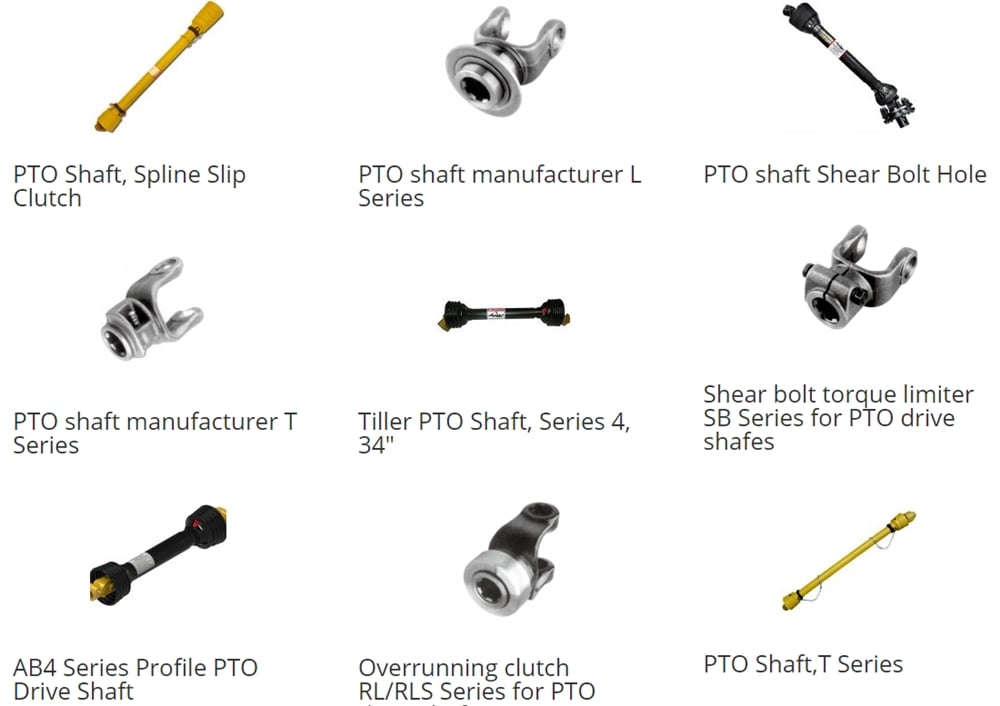

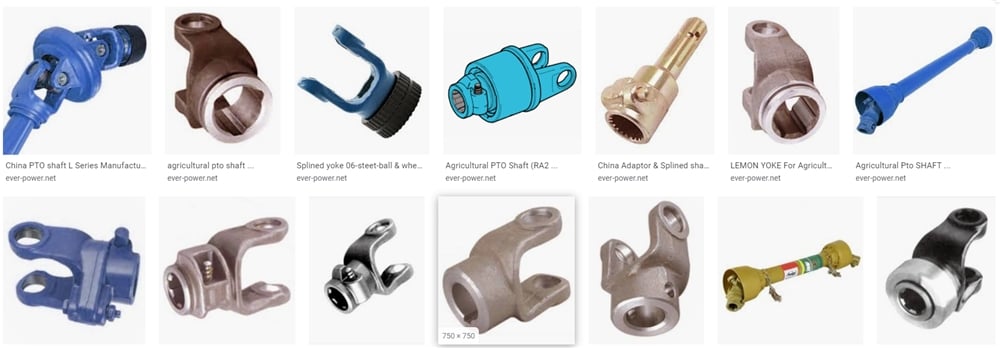

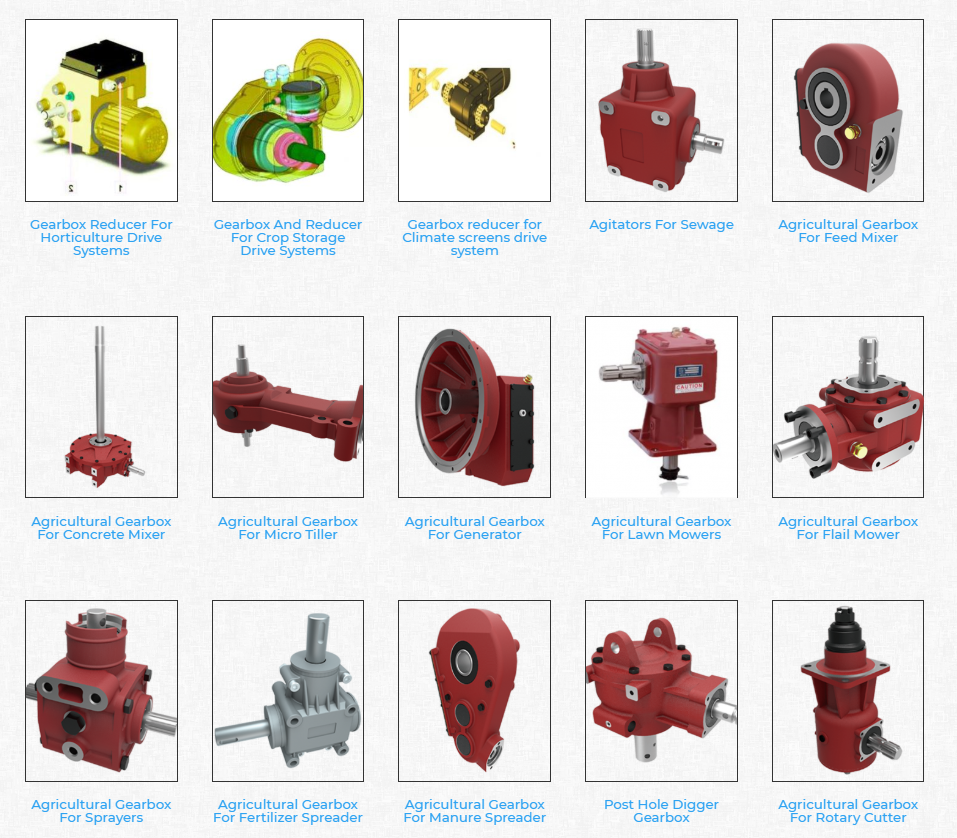

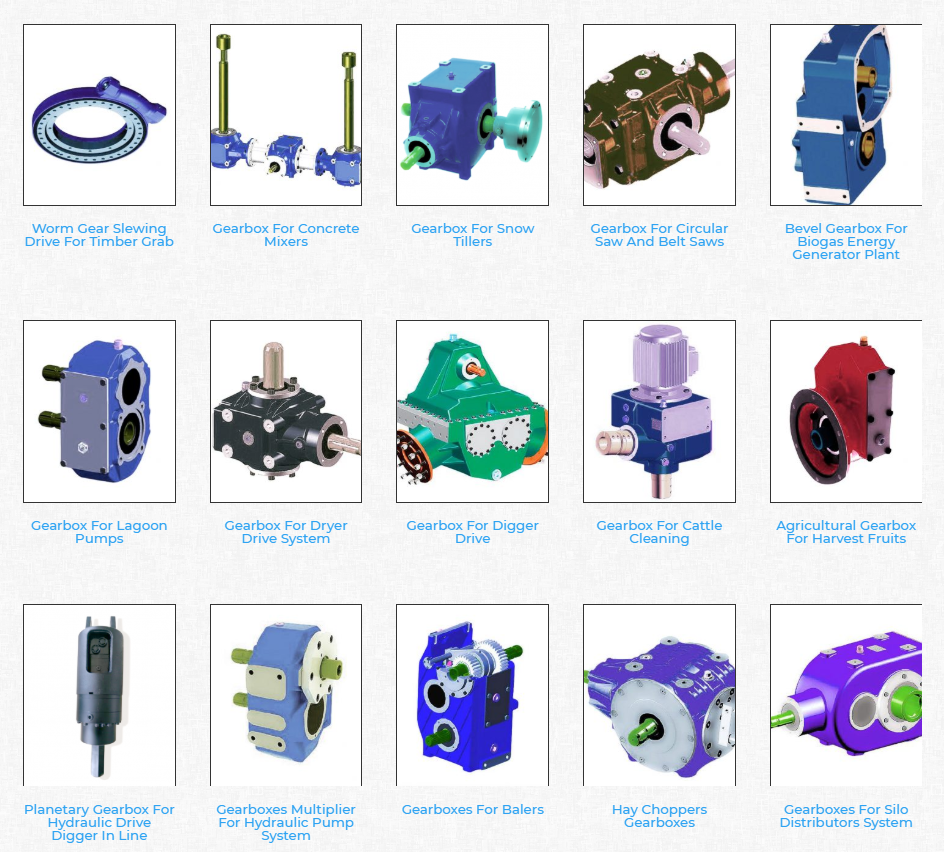

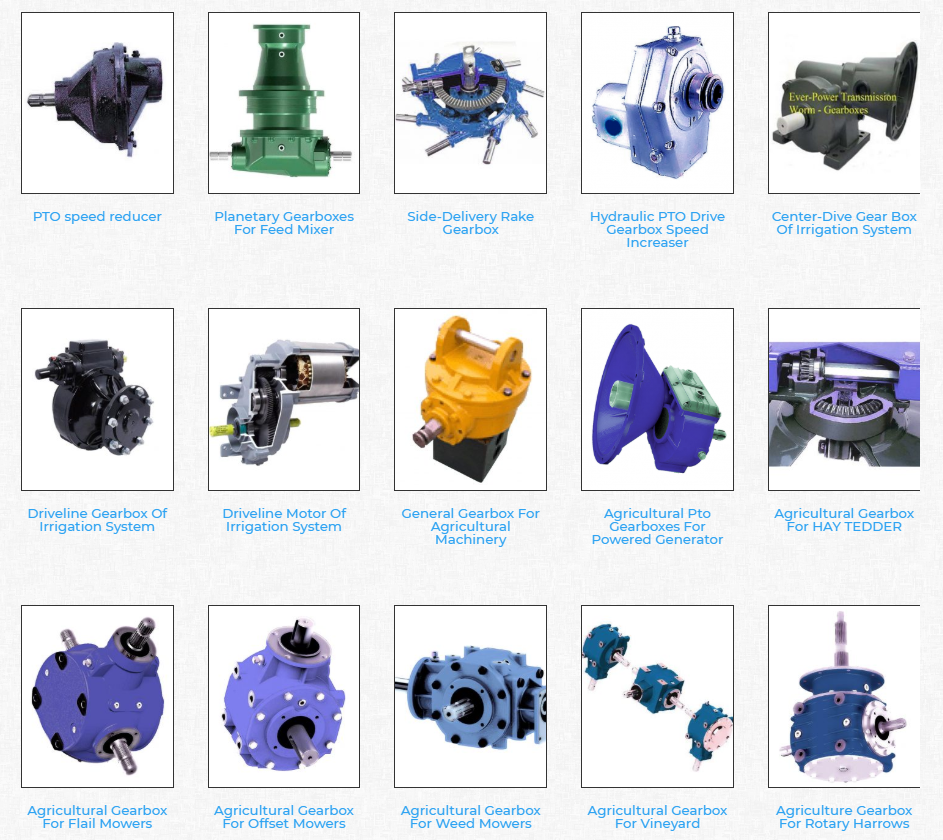



| Right after Guarantee Support | Movie complex help |
| Applicable Industries | Production Plant |
| Regional Service Location | Italy |
| Showroom Spot | Italy |
| Guarantee | 1.5 years |
| Sort | Shafts |
| Location of Origin | China |
| China | Zhejiang |
| Brand name Title | EPG |
| certification | CE |
| Substance | Steel |
| Color | Yellow&Black |
| Processing of yoke | Forging |
| Processing of tube | Cold drawn |
| Layout | Personalized |
| Certificate | CE Certification |
Item Screen
Merchandise Show
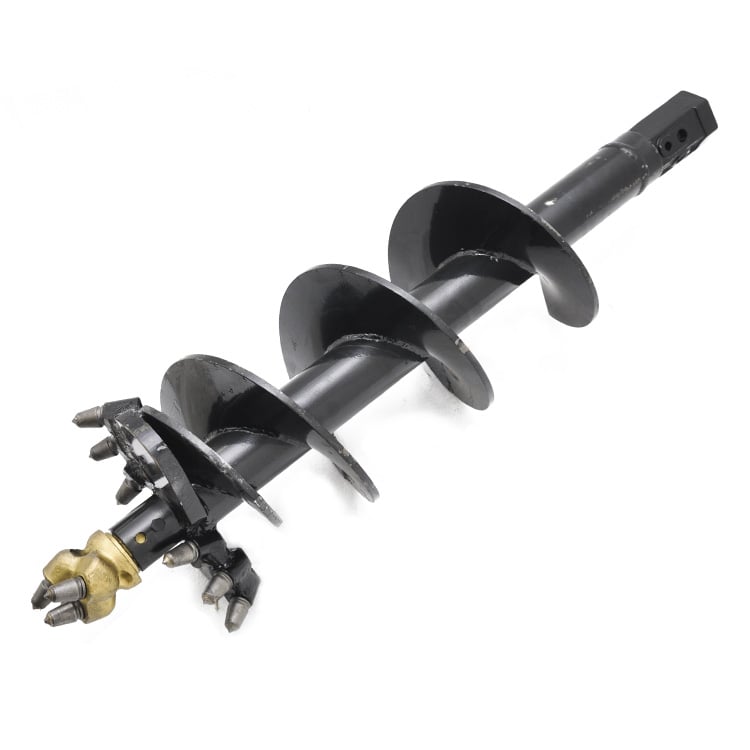

12″ Rock Auger
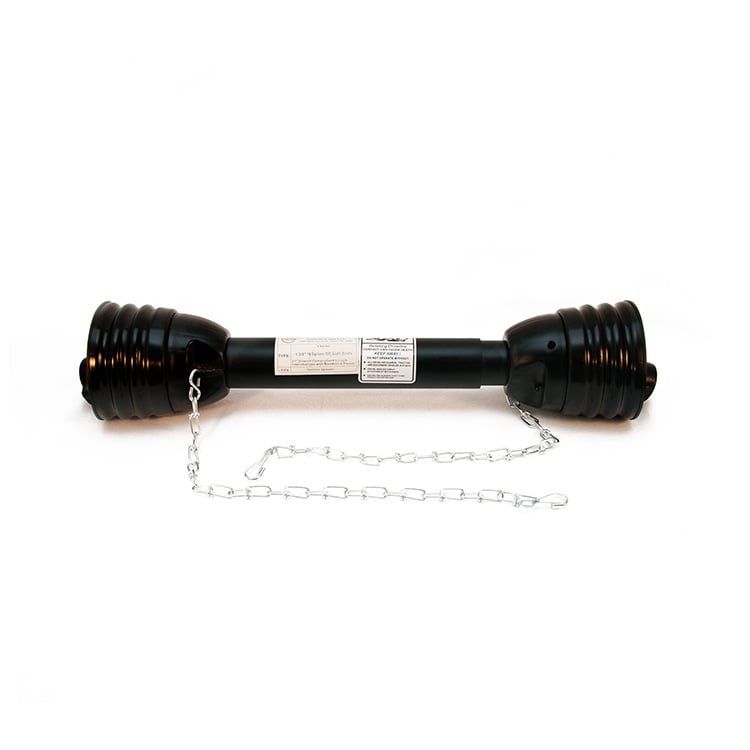

PTO Drive Line Gen …
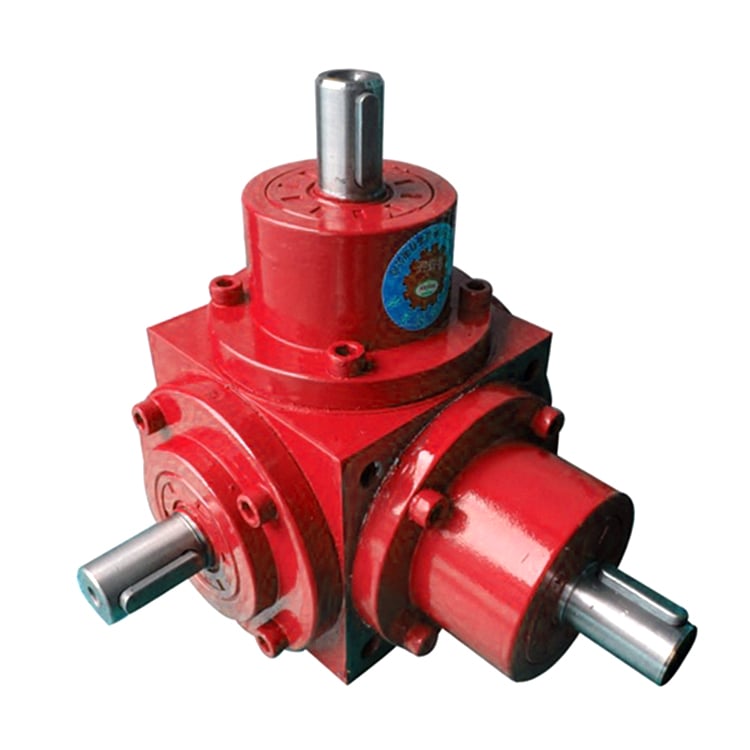

Agricultural Machi …
CompanyInfo
Business Profile
Ever-Energy Team
EPG have high-tech machinery and take a look at gear. We can create planet class large precision items.
Certifications
Certifications
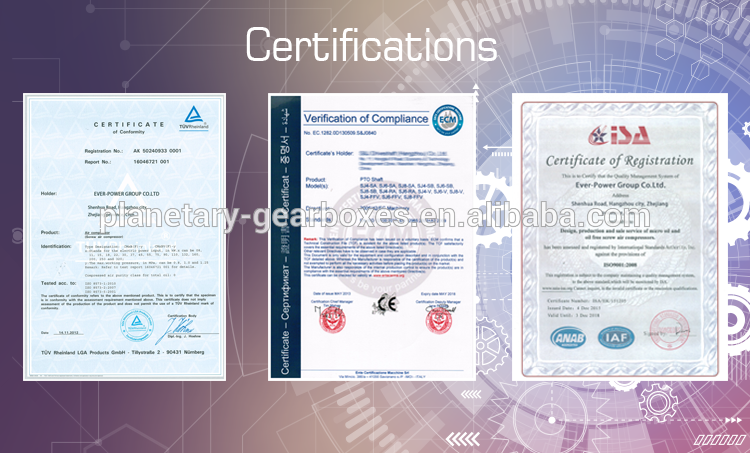

Shipment & Payment


Our Advantages
A: Your inquiry related to our merchandise orPTO Shaft Security Ideas The most widespread PTO associated accidents are inclined to happen when posts of loose apparel become entangled in the shaft. When functioning the PTO, never ever get to over the shaft for any explanation and stay away from putting on loose-fitting clothing. Injuries can take place quickly, delivering the operator minor time to respond, and in some circumstances resulting in death. prices will be replied in 24 hours.
B: Safety of your revenue area, concepts of design and style and all your non-public data.
C: Very best good quality and competitive price tag.
……
faq
FAQ
1) How can I area buy?
A: You can get in touch with us by email about your get information, or location get on line.
2) How can I pay you?
A: After you affirm our PI, we will ask for you to pay out. T/T (HSBC bank) and Paypal, Western Union are the most usual approaches we are utilizing.
……
